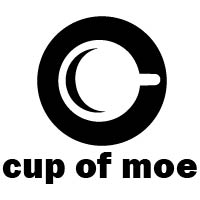We may earn money or products from the companies mentioned in this post.
“Gravity” has been welcomed into cinemas with almost universal acclaim from usually skeptical critics. Alfonso Cuarón’s space epic lives up to its reputation, unlike some exuberantly hyped films. The riveting narrative, gorgeous setting, and technological perfection engage the viewer on a number of levels. Ultimately, these aspects build a compelling case for this sci-fi film’s entry into the canon of classics, transcending genre boundaries.
Clocking in at an hour and a half, “Gravity” is short compared to the majority of box office fare. Yet despite the brevity, the movie feels significantly longer than the run-time, and in only the best ways. As it opens Dr. Ryan Stone (Sandra Bullock) and astronaut Matt Kowalski (George Clooney) attempt a repair of the Hubble Space Telescope. The seasoned Kowalski, on his last space mission, leads first-timer Stone. During the procedure NASA alerts the crew that debris from a Russian satellite is hurtling their way and the team is forced to abandon the operation. A violent storm of rubble interrupts the escape, the shuttle is damaged, and Stone and Kowalski become separated. After meeting up and fastening themselves together, the two set out for the International Space Station, in search of a craft to return to earth.
From the onset, the movie remains grounded despite its outer space setting. Although a science fiction film, there are no aliens or supernatural occurrences. The action might not necessarily be plausible, but the humanizing aspects help mask the implausibility. While Stone works unsuccessfully to repair the telescope, Kowalski savors his final celestial endeavor. “I have a bad feeling about this,” he chides. When mission control requests further elaboration, he brings up a story in which his ex stole his car. Houston replies that they are familiar with the story, implying that this isn’t Kowalski’s first expedition filled with his amiable chatter. Later he recalls a past Mardi Gras in New Orleans, which mission control claims they haven’t heard before. After their separation, Kowalski continues his playful banter, though it’s evident he aims to calm the overtly (and understandably) frightened Stone.
Further humanizing the film are the vivid details, imperfections, and character development. When first separated, Kowalski persists in contacting Stone via intercom repeatedly until she answers. During the initial separation, Stones breathing accelerates, and her heart rate amps up. The camera swivels slowly into her space suit, so the audience stares through her fogged-up helmet, soaking up the dark, blurred surroundings. Coupled with her heavy breathing and Kowalski’s calls, the audience shares Stone’s anxiety and confusion. En route to the ISS, Stone mentions losing her young daughter. Kowalski shuts off the country music he had been playing, and glances back as his companion. A small scene, it reveals Kowalski’s nature. His relaxed yet caring attitude and personality contribute significantly to Stone’s development throughout the film.
Watching “Gravity” is an expansive experience, and the details help create tension as well as engage the viewer. If you have the chance, see it in 3D. There’s an added layer of depth evident in the puffy space gloves extending off screen, screws floating away from crafts, and Marvin the Martian figures eerily creeping down abandoned hallways. The score is subtle and sparsely but appropriately used. Music mainly bolsters atmosphere, largely strengthening tension or exacerbating the feeling of isolation and loneliness.
While Cuarón’s creation is undoubtedly original, the film is reminiscent of preceding sci-fi giants. Stone’s one-woman domination of the movie and her simultaneously frightened yet persevering navigation of seemingly-endless obstacles harks back to Ellen Ripley (Sigourney Weaver) in the “Alien” series. Adding to this similarity are scenes where Stone swims down mazes of pipe-lined space station interiors which look as if they were borrowed from “Alien,” albeit exponentially less dark but equally as haunting. Ripley and Stone even broadcast similar transmissions alerting potential listeners that they are the sole survivors of their respective ill-fated missions. “Gravity” even eeks in “2001: A Space Odyssey” flash when Stone curls into a ball, relishing a brief moment of calm amidst her chaotic journey. Stone hovering in the fetal position is reminiscent of the star child Dave Bowman (Keir Dullea) who appears in the final scene of Kubrick’s “2001.”
Despite the almost universal acclaim, critics have pointed out scientific flaws. “Gravity,” however, is a science fiction film. Intended for entertainment purposes, it isn’t presented as a 100% realistic tale. If it were, the entire cast would have met their demise around the five minute mark and the Rotten Tomatoes approval rating would be substantially lower. In fact, the film is so engaging, beautiful, and unique that it’s difficult to find fault. The finale is arguably the weakest aspect of the entire experience, hurling one too many close-calls at both Stone and the audience. That being said, the end is left open to interpretation, which makes amends for potential complaints. Overall, “Gravity” makes a resounding argument as one of the greatest films of the year, and of all time. If you haven’t checked it out yet, you have your weekend homework.
This post may contain affiliate links. We are a participant in affiliate programs such as the Amazon Services LLC Associates Program, an affiliate advertising program designed to provide a means for us to earn fees by linking to Amazon.com and affiliated sites. However, all products are thoroughly tested and reviews are honest and unbiased.

